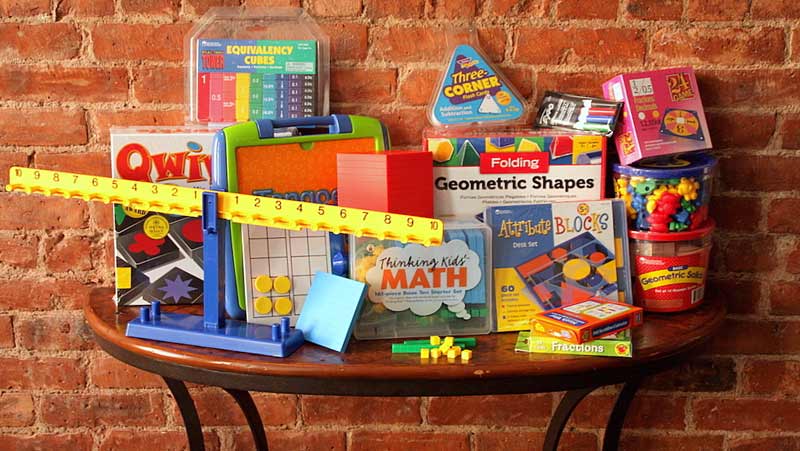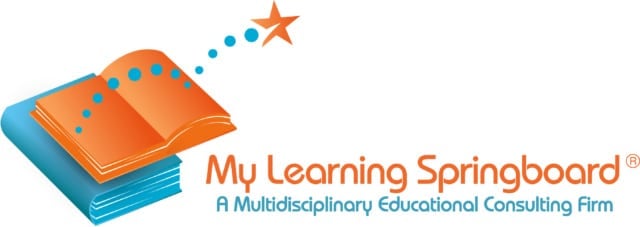 Problems! Problems! They come in all sizes and types. Some people claim that all of life is a series of problems to be solved, from the simplest (orange juice or milk for breakfast?), to much bigger (what occupation shall I pursue?), to the really big ones (how shall we achieve world peace?). When approaching a math problem, there are some important preliminary steps. First, it’s beneficial to know the standard math operations: addition, subtraction, multiplication, division, and their extended uses in working with common fractions, decimal fractions, time, money, and measurement. Having basic facts mastered and readily at hand is unquestionably helpful and necessary. But simply being able to calculate is not enough. Math is only truly useful when it is applied to solve a problem. For many students, these so-called “story problems” or “word problems” are where the trouble starts, but making effective use of universal problem-solving strategies will help.
Problems! Problems! They come in all sizes and types. Some people claim that all of life is a series of problems to be solved, from the simplest (orange juice or milk for breakfast?), to much bigger (what occupation shall I pursue?), to the really big ones (how shall we achieve world peace?). When approaching a math problem, there are some important preliminary steps. First, it’s beneficial to know the standard math operations: addition, subtraction, multiplication, division, and their extended uses in working with common fractions, decimal fractions, time, money, and measurement. Having basic facts mastered and readily at hand is unquestionably helpful and necessary. But simply being able to calculate is not enough. Math is only truly useful when it is applied to solve a problem. For many students, these so-called “story problems” or “word problems” are where the trouble starts, but making effective use of universal problem-solving strategies will help.
Certainly, many students find that it is possible to solve a given word problem with minimal consideration of how to approach it. People have varying degrees of “math sense.” Some find most math problems mysterious. Some, however, can very easily see what to do to find solutions; it almost seems obvious to them. But even for students with strong “math sense,” there come those situations when they don’t intuitively know what to do. For all learners, the recognition of specific problem-solving strategies to solve math problems is useful. Thinking about our own thinking (aka metacognition) is important in developing flexibility so that we can see more than one way to solve a particular problem. Math journaling supports this thinking and development.
Below you will find a list of some very useful problem-solving strategies. One thing that is particularly beneficial about this set of strategies is that they are, in fact, universal. In other words, they will work regardless of the math program a student might be using. Whether it’s Singapore Math or Everyday Math or something else entirely, these problem-solving strategies can provide a clear path toward solutions. Interestingly, they can even extend to problem-solving outside the area of math! Becoming familiar with them and comfortable using them can be a big help to students as they wend their way through problems, be they less or more complex.
10 Problem-Solving Strategies
- Make a model/Act out
- Draw a diagram or picture
- Look for a pattern
- Make an organized list
- Make a table
- Guess & Check
- Make it simpler
- Work backwards
- Use logical reasoning
- Brainstorm
Here are some examples of problems and how to use these strategies.
Problem 1
“How many complete turns does the hour hand on a clock make in one day?”
From the list of problem-solving strategies above, “make a model or act it out” is an excellent choice for this problem. A student could use a model or a real analog clock and turn the hands and count. Distinguishing between the minute and the hour hand and recognizing that the clock only shows 12 of the 24 hours in a day lets the student see that the hour hand makes two complete turns. A physical clock that a student can actually turn provides an important concrete experience that may prove helpful for finding the solution.
Problem 2
“Using each of the digits 0, 1, 2, 3, 4 only once, make a two-digit number times a three-digit number multiplication problem with the greatest product.”
Students can “draw a diagram or picture” of an “empty” multiplication problem with a box for each digit. Consider which two digits give the largest product and put them in the highest place value spots. Then, if it’s not immediately evident to the student, use one of the other problem-solving strategies — “guess and check” — to place the remaining digits in the remaining spots. Check by multiplying the results to identify which is actually the largest (e.g. Is it 430 x 21 or 320 x 41?)
Problem 3
“How many even numbers are there between 201 and 351?”
In this instance, “look for a pattern” would be especially helpful from the list of problem-solving strategies. Either write all numbers from 201 through 351 and notice the pattern that there are 5 in every set of 10 numbers (e.g. 201-210), and then count how many sets of 10 numbers there are and multiply that by 5, or simply write one set of 10 numbers and identify the 5 in 10 pattern without writing out all of them. Either way is valid.
Problem 4
“You have two noses and three hats. How many different nose-hat disguises can you wear?”
For this problem, “make an organized list” from the problem-solving strategies listed above works well. The list will start with Hat A and match with each nose (2), then Hat B with each nose (2), then Hat C with each nose (2). This gives a total of 6 disguises.
Problem 5
“How many numbers between 10 and 30 give a remainder of 2 when divided by 3?” You could “make a table” to find the solution.
| Number | Divided by 3 | Remainder | 2? |
| 11 | 3 | 2 | yes |
| 12 | 4 | 0 | no |
| 13 | 4 | 1 | no |
| 14 | 4 | 2 | yes |
| etc. |
As the Table continues, a pattern becomes evident (“look for a pattern” — overlapping strategy!) in which every third number gives a remainder of 2. Count them for a solution.
Problem 6
“If 25 Glinks equal a Glonk, and 15 Glonks equal a Glooie, how many Glinks equal 2 Glooies?”
Please, “make it simpler”! That strategy is an especially good choice from the list of problem solving-strategies. Let’s look at a simpler, but similar, problem. It’s simpler because the numbers are smaller, and you could even draw a picture to prove it’s correct.
If 3 Glinks equal a Glonk. And 2 Glonks equal a Glooie. How many Glinks equal a Glooie? Multiply 3×2, which equals 6.
So, if 6 Glinks equal a Glooie, then how many Glinks equal 2 Glooies? Multiply 6×2, which equals 12. So, 12 Glinks equal 2 Glooies.
Now with the larger numbers:
If 25 Glinks equal a Glonk. And 15 Glonks equal a Glooie. How many Glinks equal a Glooie? Multiply 15×25, which equals 750. So, 750 Glinks equal a Glooie.
Then, how many Glinks equal 2 Glooies? Multiply 750×2, which equals 1500. So, there are 1500 Glinks in 2 Glooies.
It’s the same process, with bigger numbers! Much simpler!
Problem 7
“If I add 10 to my age and double it, I am 90. How old am I?”
From the list of problem-solving strategies, this problem begs for the student to “work backwards”. Simply un-double the 90 and subtract ten. 90 divided by 2 = 45 and 45-10=35. Voilà! The answer is 35 years old! Then reverse again to confirm that the answer is correct.
Problem 8
“Arrange these digits and symbols to make a true number sentence (equation.) 3,1,4,9,+,/,= (Note: the forward slash [/] signifies “divided by”.)
“Use logical reasoning” to realize that any order is possible, but a larger number needs to be divided by a smaller number with no remainder (9/3=3) Then 3+1=4, so the sentence 9/3+1=4 is the solution.
For the problems that seem absolutely impossible to solve, your best option is to “brainstorm”, and that’s on the above list of problem-solving strategies! Try various ideas; work with a partner; explore to see what might work; try everything you can think of! It’s amazing how good ideas will sometimes just pop into one’s head!
As a student works with these problem-solving strategies, it becomes clear that they often overlap (as in the “draw a picture” / “guess and check” example above, problem #2). Or a student becomes especially attached to a few particular strategies that often work well. Some problems seem to be especially suitable for a particular strategy, while others can be approached from several directions. Having the flexibility to move from one strategy to another helps avoid the serious “I’m STUCK!” situation. Also, using more than one strategy on the same problem allows students to check solutions more efficiently before moving on. Again, however, THINKING about how we are THINKING is very beneficial in developing skills in this area. We call this metacognition.
Solving word problems can be fun, like being a detective who has unusual insight. There are solutions! Enjoy finding them! And make effective use of problem-solving strategies!
By Jean Snyder and Brad Hoffman, Elementary Math Specialists

